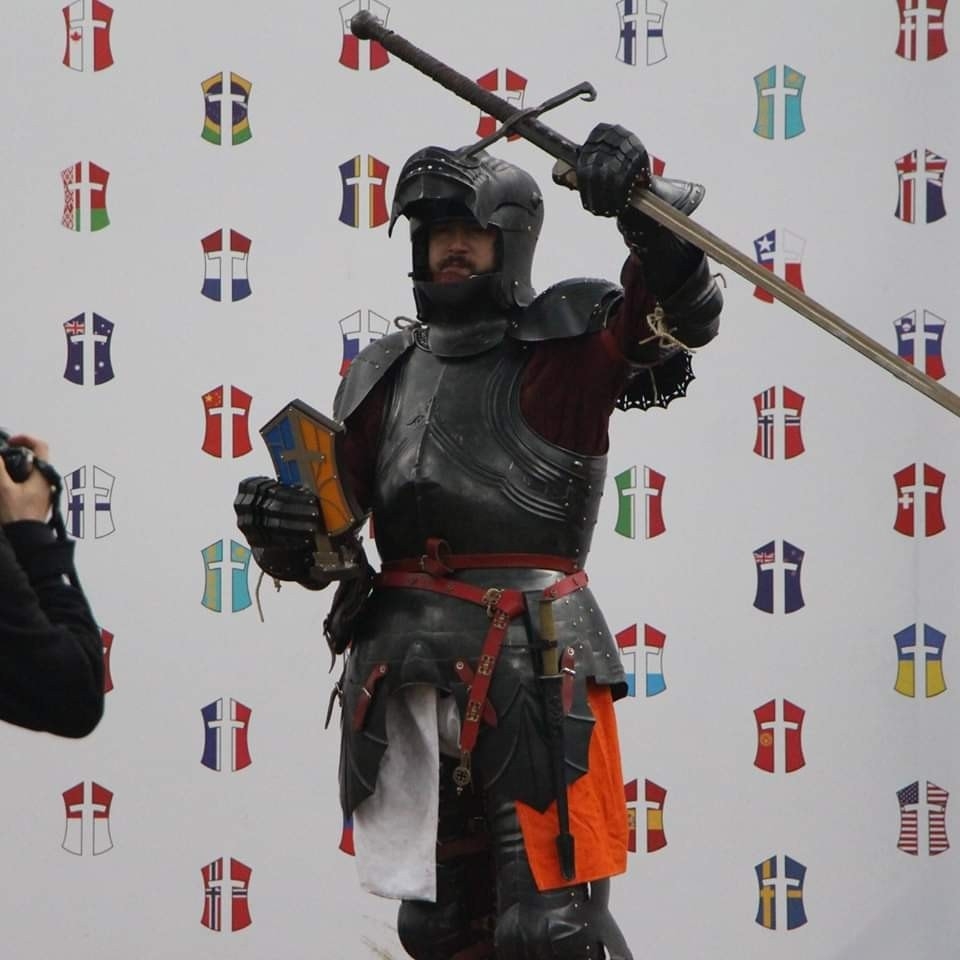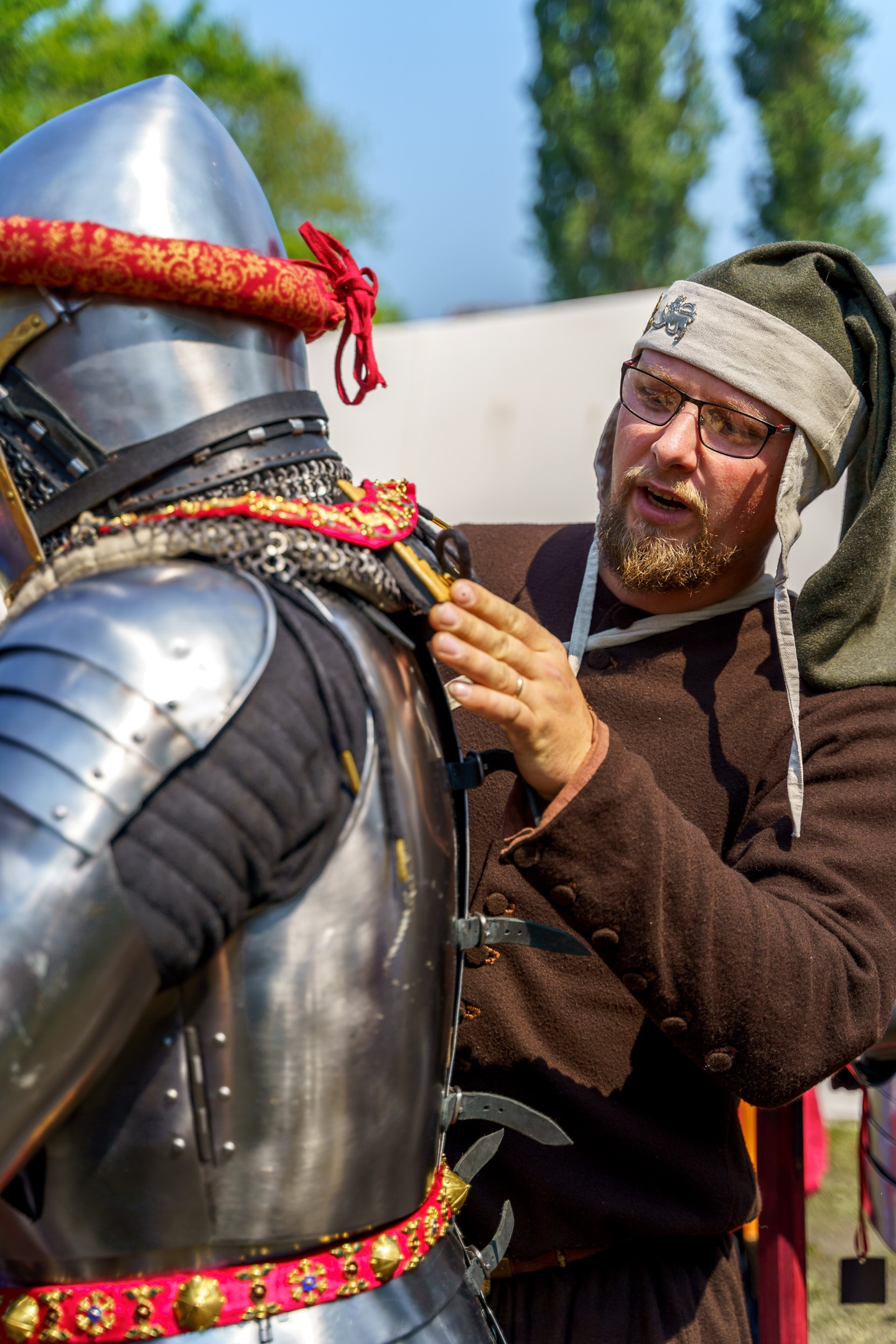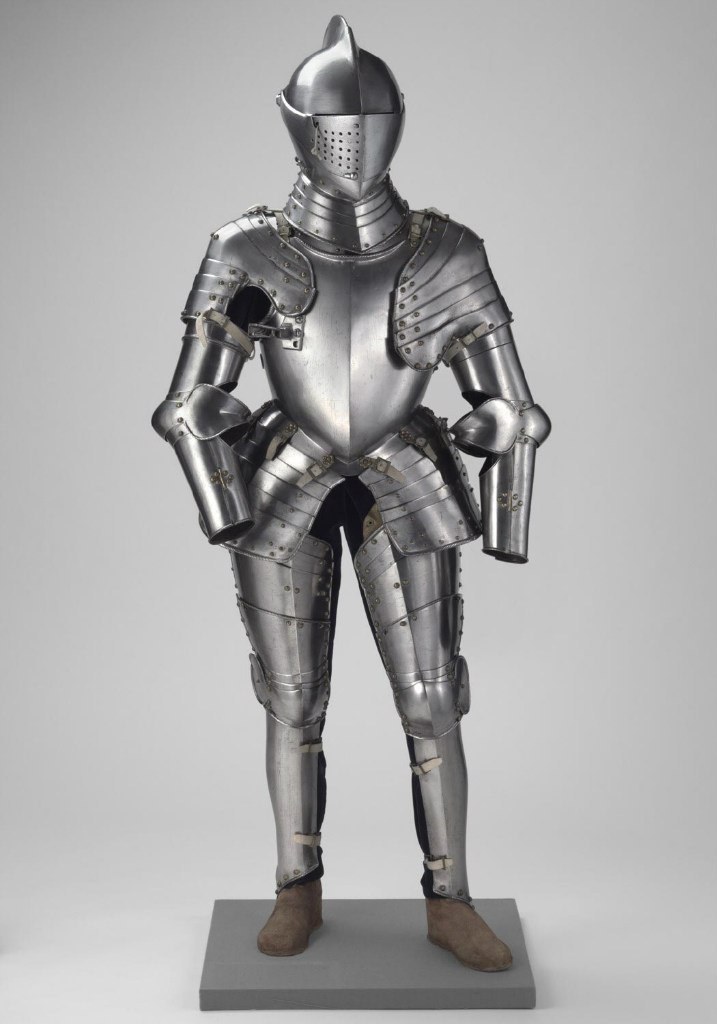 Choosing your armor requires a lot of effort and research, especially when it comes to satisfying historical and authenticity standards of this movement. Many fighters choose their armor by appearance, personal preference and financial possibility. Armor should be picked carefully, regarding time period, region, social status, safety and practicality.
Choosing your armor requires a lot of effort and research, especially when it comes to satisfying historical and authenticity standards of this movement. Many fighters choose their armor by appearance, personal preference and financial possibility. Armor should be picked carefully, regarding time period, region, social status, safety and practicality.
The HMBIA News reporter asked Milica Kovačević, the head of the Authenticity Committee, to explain by what criteria you can form your armor kit and what sources are better to use to do it right!
According to Milica, deciding on the period, the Authenticity Committee standards allows mixing equipment in 50 years span, which is quite loose and can be easily misinterpreted. Even changing allowed time span to 30 years variations can be tricky. It would be the safest to focus on a set of specific narrow timeframe and follow up existing historical documented kits.

The region defines more things than the geographical position itself. It also determines specific culture. As you know, there are distinctive differences between central European, eastern European, Asian armor groups of the same period, even within these mentioned groups. Do not mix armor parts of different regions in one set. Mix of such kits is allowed due to safety reasons, only if there are no preserved sources for specific armor protective parts, in which case the parts of armor that stand out must be hidden. Follow the HMBIA Authenticity Committee Rules and Regulations published documents where such examples and cases are mentioned.
The topic of not mixing different social status armor parts in one kit is slightly mentioned in the Armor surface document, where we mentioned not to mix expensive and luxury armor pieces out of their context. This refers mostly to late medieval armors that come as sets. Sources for them are very well preserved and if anyone decides to go for such unconventional choice in buhurt, they have perfectly preserved originals to base their armor on.
The combat component of this sport makes some of the historical source armors not practical for use in buhurt. Very often fighters’ prefer a comfort element over a typical historical look, therefore we have an invasion of wolfrib helmet, that personally, I am not a fan, but like we said, everything is possible with plausible sources.
Even with original sources be careful in interpretation. Pay attention to details, stylisation and context when using sources. It is very hard to interpret the visual sources, especially low quality miniatures, especially to inexperienced eyes. The best advice would be to gather as many sources you can, and compare it with each other. Try combining sources from miniatures, painting and effigies and all extant pieces all together, but trying to follow region and timeframe.
If you decide to buy, collect as many pictures of the armor you want to copy and compare it with original sources, no matter what the armor manufacturer tells you!
After deciding what kind of armor you want, providing relevant sources, consult the Authenticity Committee Officers to be certain, especially if you pick some unusual or customised kit.
Where to start with research?
Collection of images and links of medieval monumental tombs mostly focused on XII – XV century Europe. It has a lot of examples of historical time frame kits. But be careful when interpreting XIX century drawings of effigies! Even though it’s a great source for medieval armor, some dating on the website is wrong, so just to be certain, double check !
Douglas W. Strong analysis on XIV century brasses and effigies regarding date ranges of specific pieces of armor and their popularity
Manuscript Miniatures is one of the best image sources available. It allows you to browse by keyword where you can easily access different documented images with sources, region and specific timeframes
Armour in Art – Items in the database range in date from 1100 to 1450 and are located throughout Europe. Content is varied – frescos, altars, stained glass, reliefs, etc.
For more advanced searches it is recommended to check websites of British Library, Bibliotheque Nationale de France, The Morgan Library, Bodleian Library , Art Institute of Chicago, The J. Paul Getty Museum…
Museum repositories:
– Kunsthistorisches Museum, Vienna
– Deutches Historisches Museum
– Royal Armouries Collections, Leeds
By browsing the collections of all these museums online, you can get a lot of useful information. And visiting these stunning museums in person is an incomparable pleasure!
Create beautiful, comfortable and authentic sets of armor without forgetting about their durability and reliability!
HMBIA News thanks Milica Kovačević, the head of the HMBIA Authenticity Committee for the detailed explanations and the tremendous work that the committee is doing under her leadership for the development of the HMB sport.


